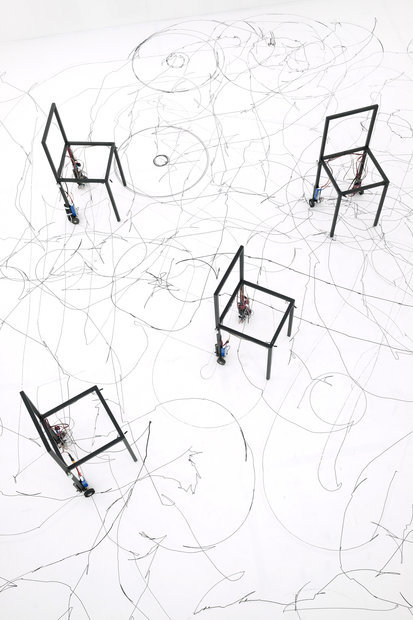

© Moritz Jähde


© Moritz Jähde


© Moritz Jähde
“I thought it was wonderful how he could take things seriously. He excused the military orderliness of his kitchen with a Vergil quote, that things also have tears, a right to a place where they feel at home.”
H. Marcuse in R. Lettau: Zerstreutes Hinausschauen (Scattered Glances)
The poets have always known more about the nature of things. While the “thing” in art, philosophy and literature lingers on the subject, in the field of design, it remains, as the name already suggests, an object.
A large furniture manufacturer in Weil am Rhein regularly organizes a “factory sale” where design-lovers flock from all over the world, sometimes camping out in front of the factory with queues kilometers long, in order to take back a piece of great design in their trunks for a fraction of the price. The act of purchase becomes a fight, the furniture becomes the booty; the first-come first-serve law in practice. The spirit in which these pieces of furniture are flaunted on the white plinths in the sales showroom are hardly there now. From the very outset, the furniture has been at the mercy of the weakest links in the chain of designers, manufacturers, vendors and users: they are designed, made, sold, owned, used. And after all that, they are defenseless. What now? Furniture is lifeless, they have no consciousness, no will. It is clear: humans are alive, the “thing”, lifeless. Only in children’s stories and fairy tales such as Alice in Wonderland, The Hunchback of Notre Dame, or Toy Story are things different.
The young product category of “smart home products” – electronic devices with a form of artificial intelligence – could call this divide into question. A vacuum cleaner robot has as its primary expression of life, unpredictable movement. Nonetheless, these supposedly intelligent products seem mindless, will-less fulfilment aid for the human mind. It is a different thing when an error hits the perfect system, and things do not behave as we expect. We give a vacuum-cleaner robot whose sensors are broken, condemned to certain death in the form of the staircase, as much empathy as a garbage truck that spreads garbage instead of collecting it, because of a technical glitch.
In his diploma work, Moritz Jähde sets out a test to see how four chairs can be given individual essences that do not express themselves through the fulfillment of human needs. Each of the stools comes with a microcontroller (Arduino) with custom programming, powering technology, edge detection and batteries, motors and wheels. The chairs are further equipped with PIR sensors, which allow them to perceive partial changes in the temperature of their environment, so it registers if there is somebody in the vicinity. As long as they are not under one another, the chairs move based on randomly combined parameters. How long, where to and whether they move at all is never foreseeable. When at least one person enters the room, they remain in their current position. The lines that the movement traces on the floor, point to the change of location. With the help of a trick, however, it is possible to glimpse the movements of the chair: if the observer remains still for a certain amount of time, the sensors will register them as part of the environment. The human becomes a static object. Or rather, furniture.